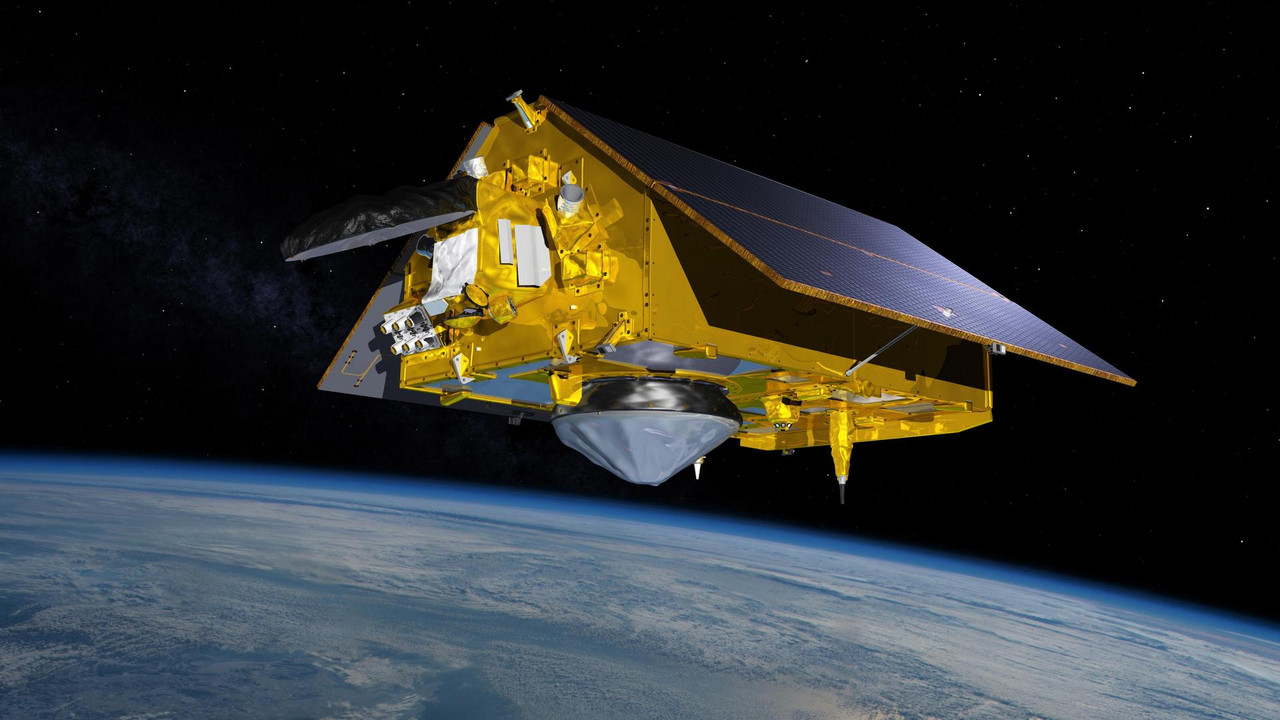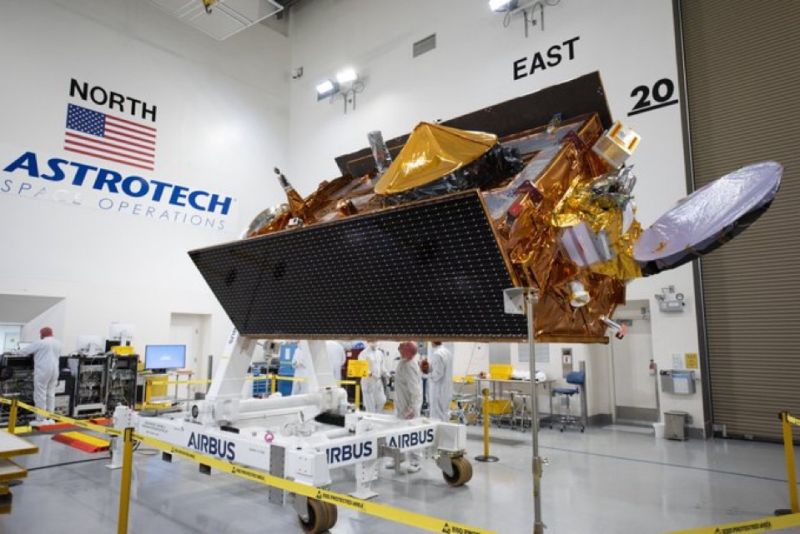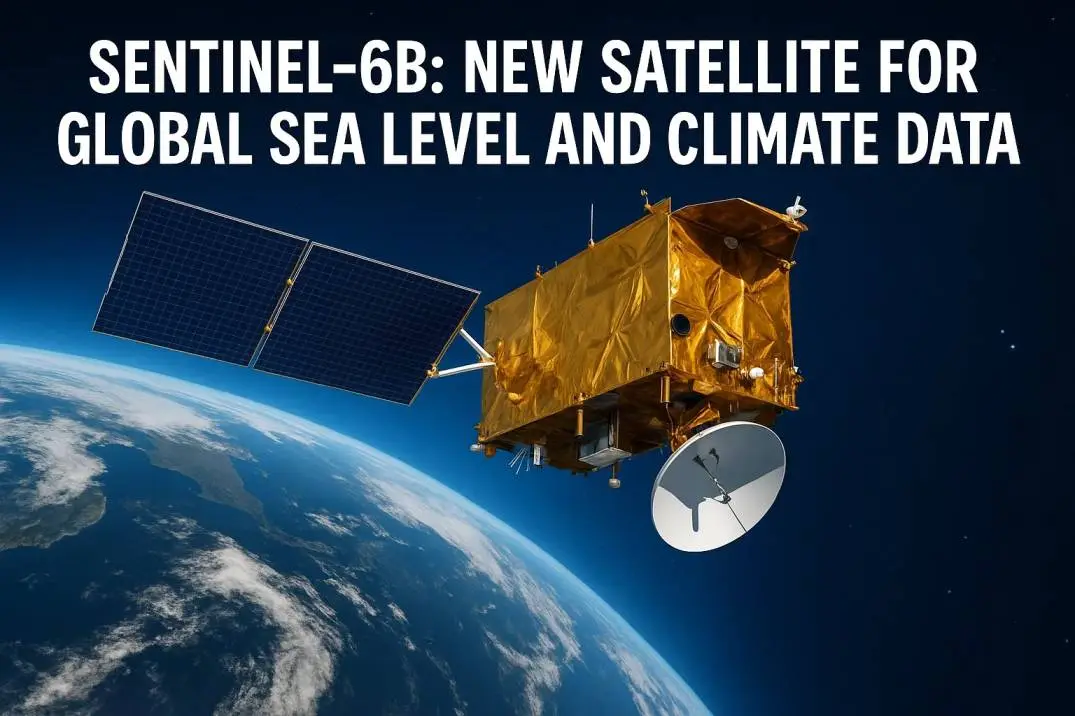NASA and its partners recently launched a new tool. It's about the size of a full pickup truck. This tool will provide sea and air data. It helps improve hurricane forecasts, protect infrastructure, and support commercial activities like shipping.
The Sentinel-6B launched aboard a SpaceX Falcon 9 rocket. It took off from Launch Complex 4E at Vandenberg Space Force Base in central California.
The launch was at 9:21 p.m. PST on November 16. The payload connected with a ground station in northern Canada at 10:54 p.m., about 1 hour and 30 minutes later. All systems are functioning normally.
Understanding tidal designs to the inch is essential for how we interact with the seas daily," said Nicky Fox, chairwoman of NASA's Science Mission Directorate in Washington.
NASA and Partners Launch Sentinel-6B to Revolutionize Sea Surface Measurements

Sentinel-6B builds on the legacy of Sentinel-6 Michael Freilich. It will improve ocean level measurements. These measurements help communities, businesses, and operations nationwide. It will also make reentry safer for our space travelers returning from Artemis Moon missions.
Read Also: NASA Sets Coverage for 32nd SpaceX Resupply Mission Departure
Sea levels change from place to place. The expert provides accurate estimates for both local and global levels, all from hundreds of miles above in low Earth orbit. These perceptions form the basis for U.S. surge forecasts.
These forecasts are key for protecting coastal infrastructure. They also help safeguard national security, energy facilities, and other coastal resources. Sentinel-6B will replace Sentinel-6 Michael Freilich, launched in 2020. This satellite became the official reference for global sea level measurements. It provides sea surface height data that other satellites use for accuracy checks.
The praise reflects a team effort with many partners. These include:
- NASA
- ESA (European Space Agency)
- EUMETSAT (European Organization for the Exploitation of Meteorological Satellites)
- NOAA (National Oceanic and Atmospheric Administration)
- It too is part of the European Union’s family of Copernicus missions.
Teamwork is crucial for a mission like Sentinel-6. "I really appreciate everyone who helped create, launch, and run this amazing project. It builds on the work of the first Sentinel-6, Michael Freilich," said Simonetta Cheli, director of ESA’s Soil Observation Programs.
This achievement shows what can happen when offices and businesses unite for a common goal. Sentinel-6B will help us gather the precise data we need. This data will help us check climate change, protect our oceans, and support coastal communities around the world.
The two satellites are part of the Copernicus Sentinel-6/Jason-CS mission. This mission is the latest in a series of ocean-observing radar altimetry missions. These missions have tracked Earth’s changing oceans since the early 1990s.
Delivering Sub-Inch Accuracy Measurements Critical for Tropical Storm and Climate Change Analysis
Sentinel-6B, like the first satellite, will deliver key data. It will track wind speeds, wave heights, temperature, and humidity. Also, water expands when it warms up. So, analysts can see which areas of the sea are hotter by looking at where the ocean surface is higher.

Combined with data from other defiant sources, this info helps us understand marine climate. It also tracks the rise in tropical storms, which increase as water warms.
Expansive streams are taller than surrounding waters because they are warmer. So, ocean surface estimates can show the relationship between the Inlet Stream and nearby waves. Where they meet, oceans can get to be rougher, showing a danger to even the biggest ships.
Sentinel-6B highlights NASA's dedication to delivering important data and science to decision-makers,” said Karen St. Germain, head of NASA's Soil Science Division.
You Must Also Like: How Do You Smoke Moon Rocks?
Sentinel-6B will gather data on sea surfaces. This will help coastal communities, shipping, fishing, national defense, and emergency response. This is what NASA does — puts progressed innovation and science into action for the benefit of the nation.
When Sentinel-6B reaches its working height, it will fly about 30 seconds behind Sentinel-6 Michael Freilich. Both carry the same science instruments. When the mission wraps up cross-calibrating the data, Sentinel-6 Michael Freilich will join a varied group.
Sentinel-6B will then become the official reference satellite. It will orbit the Earth about 13 times daily at 830 miles (1,336 kilometers) above the surface.
Sentinel-6B illustrates the flexible soil science applications made conceivable by expertly built, space-based innovation. The satellite can measure about 90% of Earth’s oceans to within an inch. This data is key for the U.S. and the global community," said Dave Gallagher, an executive at NASA’s Jet Propulsion Laboratory in Southern California.
More Approximately, Sentinel-6B
Copernicus Sentinel-6/Jason-CS is a collaboration between ESA, the European Union, EUMETSAT, NASA, and NOAA. French space office CNES (Centre National d’Études Spatiales) contributed specialized support. Copernicus is the European Union’s soil observation program. It is driven by the European Commission and includes the Sentinel missions.
JPL, part of Caltech in Pasadena, supplied three science instruments for each Sentinel-6 satellite.
Here are three key tools:
- Progressed Microwave Radiometer
- Global Navigation Satellite System – Radio Occultation
- Laser retroreflector array
NASA is also providing dispatch services and ground systems for its science missions. They support the science data processors for two of these missions. They also help U.S. members of the international Sea Surface Geography Science Group and the Sentinel-6 science teams.

